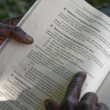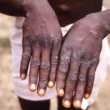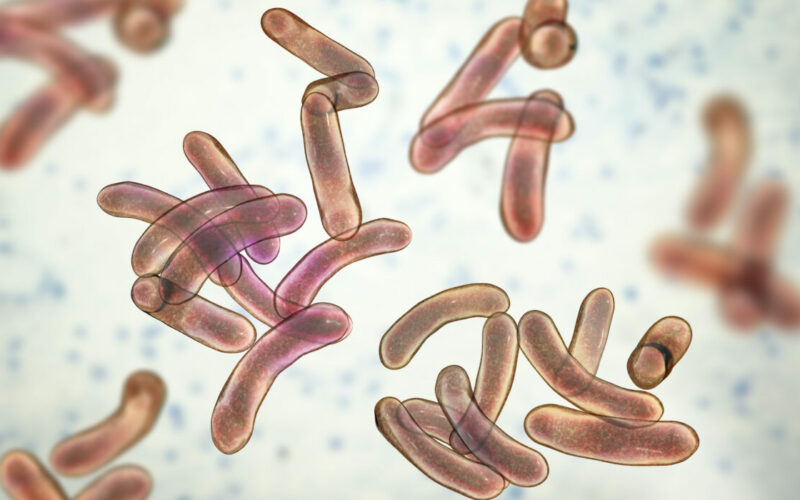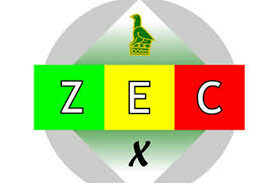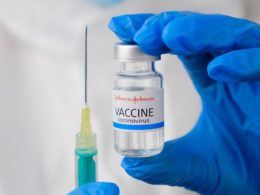What is cholera?
Cholera is an acute diarrheal infection caused by bacteria. This occurs when one consumes food and/ water contaminated with the cholera bacteria. Cholera causes severe dehydration, diarrhea and can lead to death. Cholera can be easily prevented and controlled.
Cholera is spread through the five “Fs”:
• Fluid/Water: By drinking water or fluids that have been contaminated by faeces and have not been treated.
• Fingers: By eating with unwashed hands after using the toilet or after contact with faeces.
• Flies: Can transfer the germs to food, because flies have contact with faeces and then settle on food.
• Food: By eating food that has been contaminated by fingers, flies, or water that have come in contact with faeces.
• Fields/Floors/Bushes: The soil may contain faeces from cholera-infected persons, resulting from open defecation either on the ground or near water sources instead of using covered latrines. You can also infect yourself by eating with unwashed hands, after working in fields that have been in contact with the cholera bacteria.
Other High-risk practices include: –
• Improper handling, preparation and /or transportation of an infected dead body.
• Religious practices that discourage seeking medical care. What are the signs and symptoms? Cholera is an extremely infectious disease that can cause severe acute watery diarrhea with or without vomiting. It takes between 12 hours and 5 days for a person to show symptoms after consuming food or water contaminated with cholera bacteria. Most of those infected have no or have mild symptoms and can be successfully treated with oral rehydration solution. Cholera can cause death from dehydration (the loss of water and salts from the body) within hours, if not treated.
• Watery diarrhea
• Vomiting
• Abdominal discomfort
• Cramps in the abdomen , arms, or legs
• Increasing dehydration leads to: –
Sunken eyes,
– Inability to drink or drinking poorly,
– Skin pinch going back very slowly (>2 seconds).
– Shock
– Loss of consciousness.
People not showing symptoms can still spread cholera because the bacteria are present in their faeces for 1-10 days after infection and are shed back into the environment, potentially infecting other people.
How to protect yourself from cholera?
- Handwashing practices a. Wash your hands with soap under safe running water:
• Before, during, and after preparing food.
• Before and after eating food or feeding your children.
• After using the toilet.
• After cleaning your child’s bottom.
• After taking care of someone who is sick of cholera. b. Wash all parts of your hands – front, back, between the fingers and under the nails.
- Food preparation and handling
• Wash hands with soap under running water before preparing, cooking, or eating food. • Plates and utensils must be kept clean and off the ground.
• Cook food well, eat it hot.
• If you are not ready to eat immediately, cover it to prevent flies from contaminating the food, store carefully in a cool place and reheat thoroughly before eating.
• Wash all fruits and vegetables under running water before eating them.
- Drink and use safe water. To be sure water is safe to drink and use:
• Pour the water straight from the container. Do not put cups, or anything else in the water container.
• Boil it or treat it with chlorine or other water treatment chemicals.
• Safe water should be collected, transported, and stored in a clean covered container.
• Avoid drinking from the same glass or utensil.
- Use of toilets/latrines • Use toilet/latrines. Keep them clean.
• For children too young to use a toilet/latrine, use a potty or diapers and properly dispose the feaces in a toilet/latrine.
• A handwashing device (with soap and water) must be strategically present near the toilet/latrines
• Wash hands with soap under safe running water after going to the toilet/latrine
• Wash your hands and your child’s hands after cleaning your child’s bottom. • Build your own toilet/latrine for family use.
• Keep the toilet/latrine closed at all times.
- Use of oral cholera vaccine (OCV)
• Oral cholera vaccines will decrease risk of getting cholera if living in an environment where cholera is common or prevailing. However, this will not remove the risk completely.
• The eligible population must receive OCV if it is available and accessible because it is the recommended control measure during cholera outbreaks.
• Even if you receive cholera vaccine, you should still practice the recommended preventive measures. What to do if you or your family has cholera?
• The biggest danger of cholera is loss of fluid from the body through diarrhea and or vomiting. Do not panic but act quickly.
• The sick person should drink lots of fluids such as the salt sugar solution made with safe water. Oral rehydration solutions (ORS) are available in some shops, pharmacies and local clinics
• Immediately, visit the nearest health facility.
• The sick person should continue to drink ORS while seeking care.
• Children with cholera need to continue breastfeeding to replenish all the liquids that are lost while being rushed to the nearest health facility
Take the cholera vaccine if available during an outbreak. • Cholera is an easily treatable disease. The majority of people can be treated successfully through prompt administration of oral rehydration solution (ORS). The WHO/UNICEF ORS standard sachet is dissolved in 1 litre (L) of clean water, homemade sugar-salt rehydration solution is made by 8 level teaspoons of sugar and1/2 level teaspoon of salt added to 1litre of safe water
